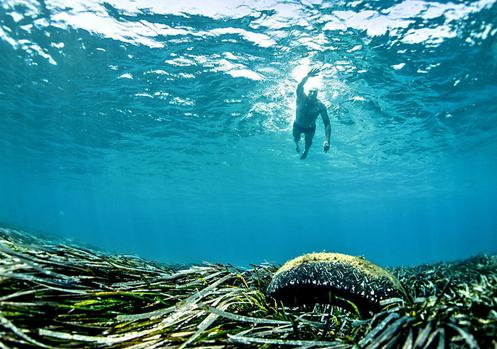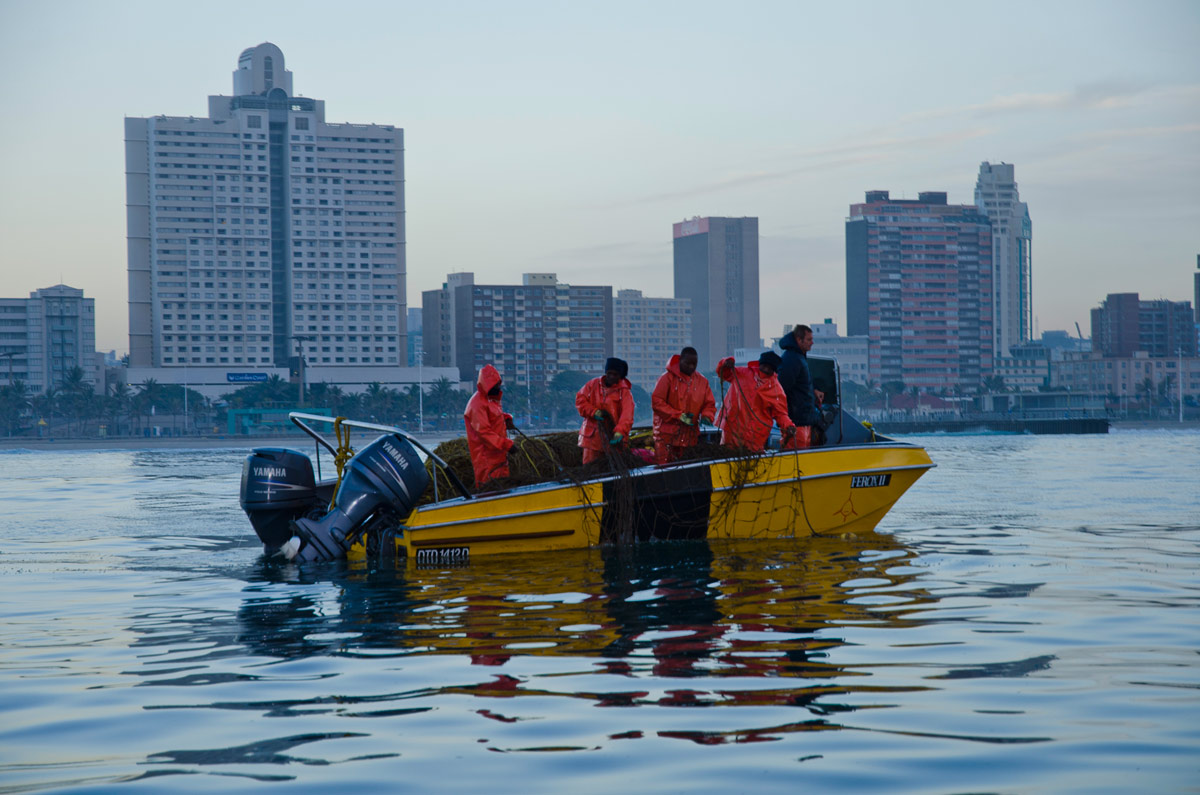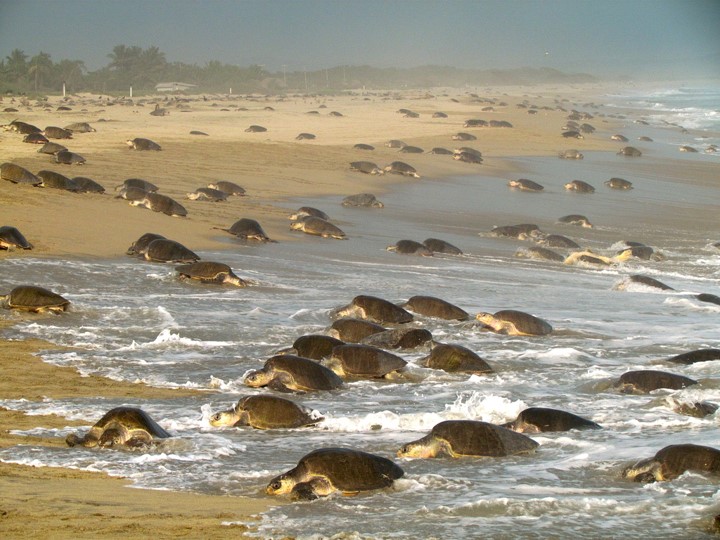You may have already told your dad he is super, but how does he stack up next to a seahorse?
by Rio Button
Stealthy daddy seahorses generally give birth under the cover of nightfall to reduce the chances of their newborns being eaten by beady-eyed predators. Knysna daddy seahorses (Hippocampus capensis) will birth between 7 and 120 baby seahorses per brood! How does a daddy seahorse come to give birth? Well just to clear things up, seahorses aren’t hermaphrodites nor do they have sex changes, as multiple other species of fish do.
It starts with a wanna-be daddy seahorse. He will parade around showing his empty pouch to prospective females. An eager female who thinks he will make good father material will transfer her eggs into his pouch. There he will fertilize the eggs and they will embed into his pouch’s tissue lining. Here each egg will develop into a teeny-tiny seahorse with eyes that move independently like a chameleon, a mouth like an anteater, a pouch like a kangaroo, and a prehensile tail like a monkey.
The temperature of the water around him influences how quickly they develop, warmer water means they grow more quickly, it can take between 14 and 45 days for the teeny-tiny Knysna seahorse babies to be ready to emerge.

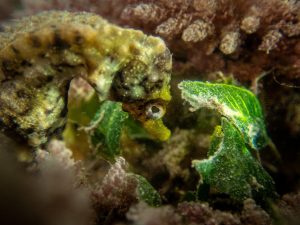
In the family way
Because daddy seahorses get pregnant, freeing up mommies to go their merry way and give birth to so many babies, we tend to think of daddy seahorses as some kind of super dad, but . . .
After their babies emerge from their pouch some species of seahorses have been known to eat their own offspring, making them satiated dads rather than super dads.
But to be fair, seahorse dads typically don’t eat for several hours after giving birth, reducing the chances of eating their own babies. After this fasting the daddy seahorses’ fatherly commitments are complete and baby seahorses are left to fend for themselves in the big wide sea or in the case of Knysna seahorses, the big wide estuary.
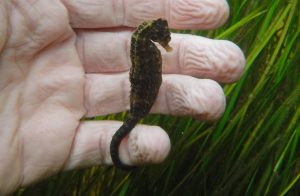
Rescue mission
Knysna seahorses are the only seahorses that don’t live in the sea. They are only found in only three estuaries on South Africa’s Southern Cape cast, one of which was in the news recently.
At 3.30am on 25 May, an excavator rumbled into life and gouged the last bit of sand separating the Swartvlei estuary, from the sea. Over the next few days, water levels in the estuary began to drop, leaving Knysna seahorses stranded motionless on the banks, their prehensile tails wrapped tightly around aquatic plants. Without water, these cryptic creatures would soon dehydrate and die. But volunteers with SANParks Seahorse Citizen Science Programme sprang into action, returning stranded seahorses to the safety of deeper water.
Read the full story here: Mercy mission to save Knysna seahorses. Also, tune into SABC 3’s Expresso show on Thursday, 24 June, when Rio Button will be appearing on the show’s Into The Wild section to talk about Knysna seahorses and share more insights about these amazing creatures. – Roving Reporters
Roving Reporters Ocean Watch correspondent Rio Button is a marine biologist, commercial diver and surfer. She has a Masters of Science degree in Conservation Biology from the University of Cape Town. She is also the chief conservation officer at Wildcards.

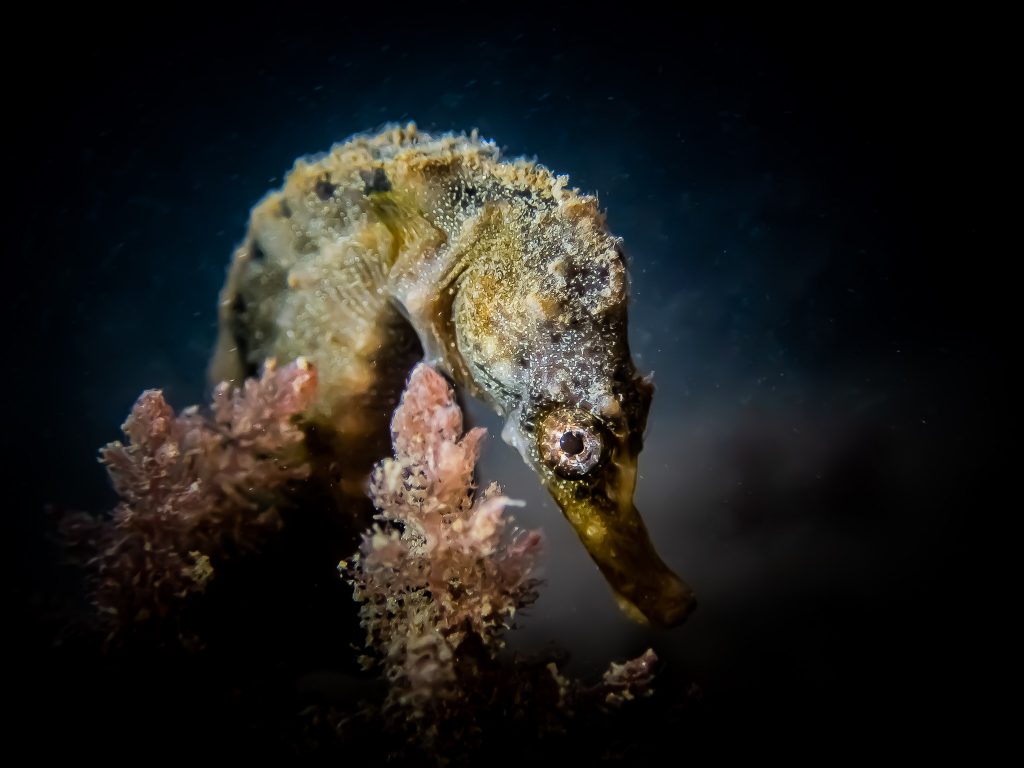
- This story forms part of a biodiversity reporting project supported by the Earth Journalism Network.
Now read: Covid 19 ‘anti-shark pill’ video lands the WHO in hot water
Click here to read more Ocean Watch stories





